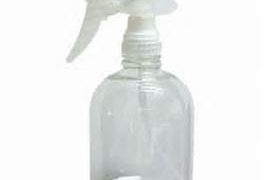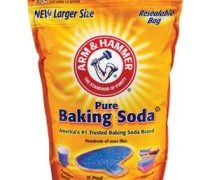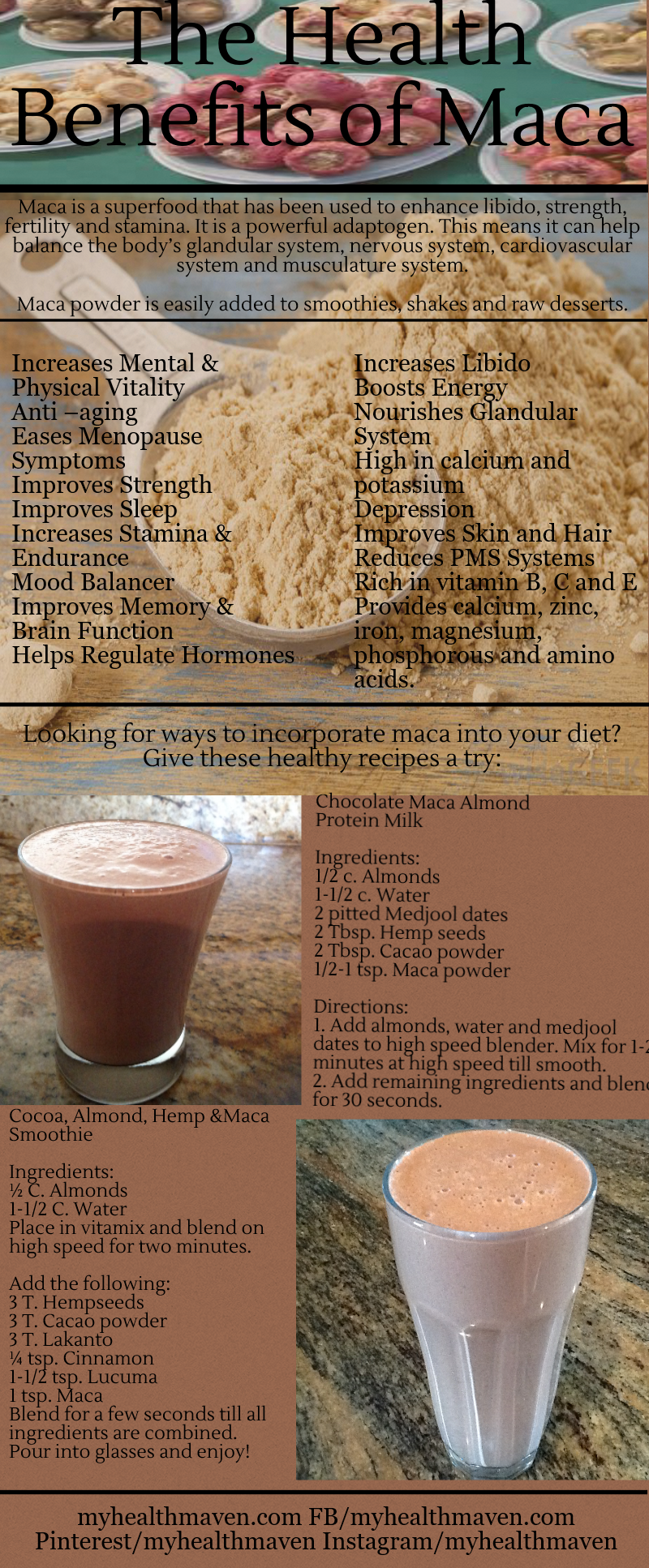Salt can be used for more than seasoning your food, it’s a wonderful product for cleaning a multitude of surfaces in and around your home. In addition salt is inexpensive, readily available and offers a non-toxic cleaning option.
In order to minimize the negative effects of using chemical cleaners many common household items can often be great substitutes. Items such as lemon, oil, vinegar, baking soda and salt are just a few of the multipurpose cleaning items you may have in your pantry.
The problem with product labels
Since most cleaning products aren’t listing ingredients, you can learn something about the potential product hazards by looking for signal words on the label. Look for “signal” words such as Danger, Warning or Caution. These words provide some indication of a product’s toxicity. In general products labeled Danger or Poison are the most hazardous; a Warning label is considered moderately hazardous, and labels with a Caution label are considered slightly toxic.
So let’s avoid the toxins and look at 10 different ways to use salt around the home.

Around the House
Air fresheners-Air fresheners are full of toxic chemicals that are known to increase asthma, cancer and cause neurological damage. Opt for natural air fresheners instead: Herbal, floral, pine air freshener-Pour salt in a small bowl and layer with either flower petals, fresh herbs or pine needles. Citrus air freshener-Cut a citrus fruit in half, remove pulp and fill with salt. This lends a fresh citrus fragrance to the room. (1)
Carpet cleaners-Frequently have added fragrance and chemicals. Pass on toxic options and clean up a grease spill with items from your pantry. Mix up 1 part salt to 4 parts rubbing alcohol and rub it hard on the grease stain, being careful to rub in the direction of the rug’s natural nap.
Wood polish-Wood polish ingredients can vary, most have added chemical fragrance and propellants if you’re using an aerosol can. In addition they can contain poisonous ingredients and include hydrocarbons (such as waxes, oils, organic solvents). Remove watermarks from wood– Remove them by mixing 1 teaspoon salt and enough water to make a paste. Gently rub the paste on the ring with a soft cloth until it’s gone. Restore the luster of your wood with a small amount of homemade polish. This is a simple recipe; to a spray bottle add ¼ cup of white vinegar and 1 cup of olive oil. Apply to furniture and wipe with a soft cloth. (2)

Around the kitchen
Brass and Copper Polish-Brasso is a common metal cleaner used on a variety of metals including brass, copper, stainless steel, chrome, pewter, and bronze. It is also a flammable material that uses ammonia to clean. Ammonia is damaging to the respiratory system. Labelling also states to avoid contact with skin, clothing and eyes. Try this nontoxic option instead: Brass and Copper Polish: Use equal amounts of salt, flour, and vinegar. Mix the paste, apply to the surface, leave on for one hour and buff with a soft cloth. (3)
Coffeepot Cleaner- Many coffee pot cleaners such as Brew Rite don’t actually list their ingredients, but do suggest that you rinse out your coffee carafe with three full carafes of water before using again, which makes me nervous. Remove coffee & tea stains from your glass coffee or teapot-The pot should be at room temperature before cleaning. Mix 4 teaspoons salt, one tablespoon water and one cup of crushed ice in pot. Swirl until clean and rinse.
Silver Polish-Good Housekeeping recommends Weiman Royal Sterling Silver Polish, as their top choice for cleaning silver flatware, silver trays etc. The MSDS sheet lists the main chemical as Triisopropanolamine which EWG rates as a moderate health concern, due to its irritant properties to skin, eyes and lungs. Opt for this simple version instead: Silver Cleaner/Polish: To start, line the bottom of a sink with aluminum foil and lay your tarnished silver on top. Top with a mixture of 4 cups of hot water with a tablespoon of salt and a cup of baking soda. Allow to sit for 20-30 minutes. For any tarnish that remains, make a paste of soda and salt and polish with a soft cloth and rinse clean. (4,5)
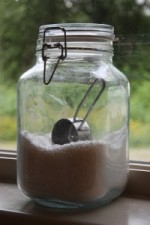
Laundry
Pre-soaking stains-Bleach is sometimes used to remove stains in clothes. However, bleach exposure can cause irritation in the eyes, mouth, lungs and on skin. Individuals with asthma or other breathing problems are particularly susceptible. In addition if it comes in contact with the skin, it can burn human tissue. Rather than pre-treating with bleach or detergents remove yellow underarm stain with simple salt. Simply dissolve 4 tablespoons salt in 1 quart of hot water. Sponge the garment with the solution until the stain disappears. (6)
Fabric softener–Fabric softener is laden with fragrance and chemicals that are hazardous to your health. New jeans are often stiff, the easiest way to soften a new pair of jeans is to add a half cup of salt and wash with your regular detergent. In addition, adding ½ cup of baking soda OR ½ cup of vinegar to the wash will soften your regular clothes. (7)
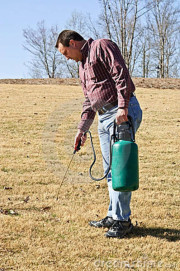
Around the yard
Weed killer–Round up contains glyphosate which the World Health Organization has listed as possibly carcinogenic. There are numerous other links to kidney disease, and cancer, as well as being 125 times more toxic than regulators admit. Avoid the cancer causing toxins and opt for homemade weed killers instead. There are numerous recipes for making homemade weed killers. (8, 9, 10, 11)
Recipe 1: Add 4 Cups of white vinegar and ¼ cup salt mix and pour into your sprayer. Don’t spray on your lawn. This is used carefully around plants or liberally in areas that are weed only.
Recipe 2: Mix one cup of rock salt to a gallon of water. Allow salt to dissolve. Spray on weeds. The salt prevents the plants from being able to absorb moisture and they will brown and die within a few days.
Recipe 3: 1 Gallon Vinegar, 2 C. Epsom Salt, 1/4 C. Dawn Dish Soap (Original Blue). Add all ingredients to sprayer. Spray in morning on hot day by dinner, plants are looking brown and wilted.
Poison Ivy-The most difficult thing about getting rid of poison ivy is that the whole plant must be eliminated. If any of the root survives, the poison ivy plant will come back. Many people use Round Up, but it will need to be consistently applied until the plant stops regrowing. Make your own non toxic spray for poison ivy by combining 3 cups of salt, 2 cups of hot water, and ¼ cup of dish soap and spraying the leaves and branches. As with Round Up it may take 2-3 applications but will rid your yard of the pesky plant.
This article was originally posted at The Hearty Soul
References:
- Ten questions concerning air fresheners and indoor built environments. (2016, November 05). Retrieved February 26, 2018, from https://www.sciencedirect.com/science/article/pii/S0360132316304334
- Furniture polish poisoning. (n.d.). Retrieved February 26, 2018, from https://medlineplus.gov/ency/article/002788.htm
- MSDS Data Sheet-Brasso Metal Polish. (n.d.). Retrieved February 26, 2018, from https://www.parish-supply.com/documents/0380008-01.pdf
- U. (2018, February 06). Top Shiners. Retrieved February 26, 2018, from http://www.goodhousekeeping.com/home-products/silver-polish-reviews/a16482/best-silver-polishes/
- TRIISOPROPANOLAMINE. (n.d.). Retrieved February 26, 2018, from http://www.ewg.org/skindeep/ingredient/706666/TRIISOPROPANOLAMINE/#.WpSbsOjwaUl
- Benzoni, T. (2017, December 05). Toxicity, Bleach. Retrieved February 26, 2018, from https://www.ncbi.nlm.nih.gov/books/NBK441921/
- E. (n.d.). Dont get slimed: Skip the fabric softener. Retrieved February 26, 2018, from https://www.ewg.org/enviroblog/2011/11/dont-get-slimed-skip-fabric-softener#.WpScWOjwaUl
- World Health Organization Labels Glyphosate Probable Carcinogen. (n.d.). Retrieved February 26, 2018, from https://www.ewg.org/release/world-health-organization-labels-glyphosate-probable-carcinogen#.WpSdb-jwaUl
- Ji, S. (2016, September 13). Dramatic Increase in Kidney Disease in the US and Abroad Linked To Roundup (Glyphosate) ‘Weedkiller’. Retrieved February 26, 2018, from http://myhealthmaven.com/dramatic-increase-kidney-disease-us-abroad-linked-roundup-glyphosate-weedkiller/
- Ji, S. (2016, September 13). Glyphosate (Roundup) Linked To Cancer of the Lymph Tissue In New Study. Retrieved February 26, 2018, from http://myhealthmaven.com/glyphosate-roundup-linked-cancer-lymph-tissue-new-study/
- Ji, S. (2015, July 02). Roundup Herbicide 125 Times More Toxic Than Regulators Say. Retrieved February 26, 2018, from http://www.greenmedinfo.com/blog/roundup-herbicide-125-times-more-toxic-regulators-say


